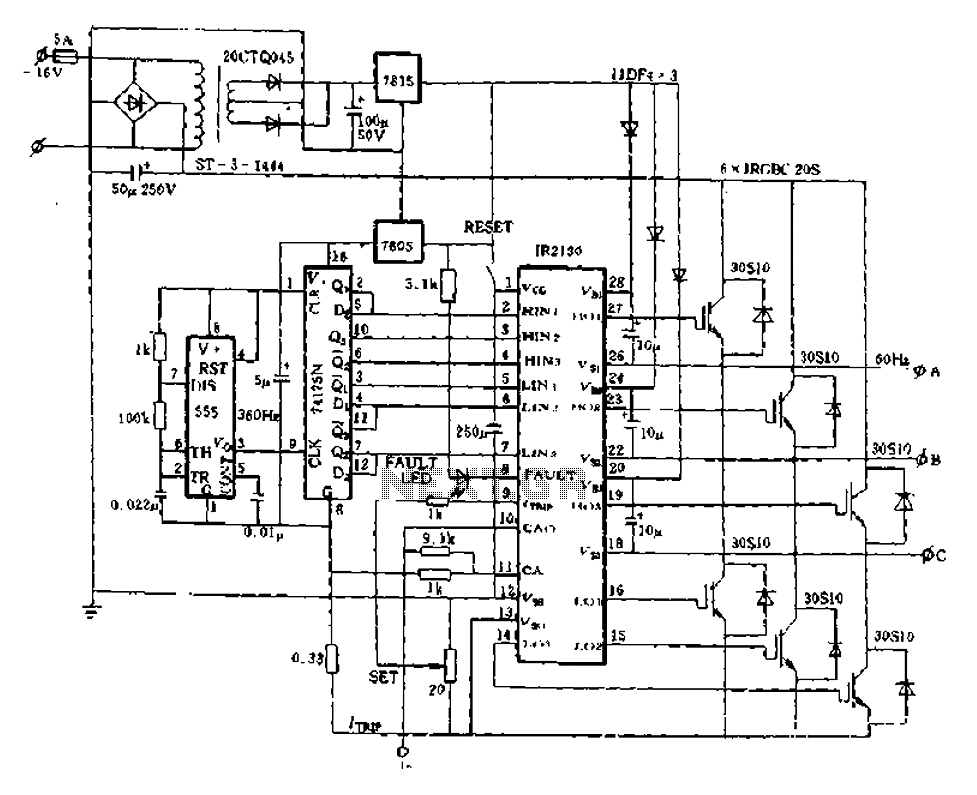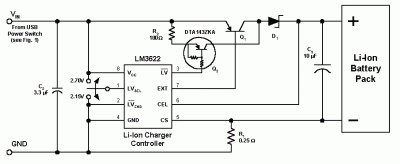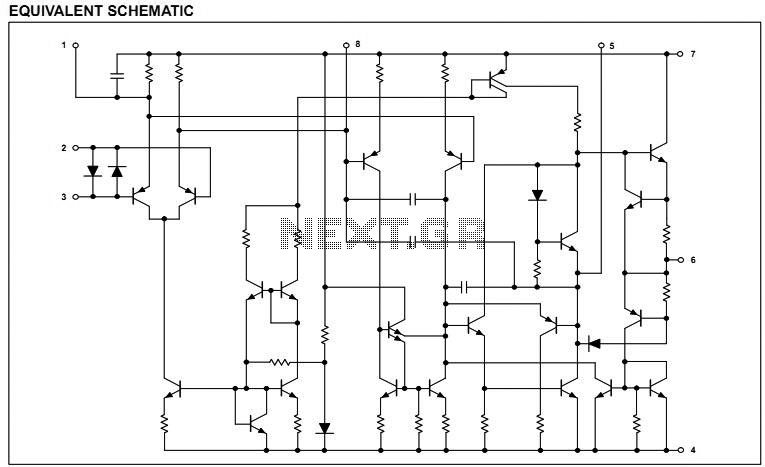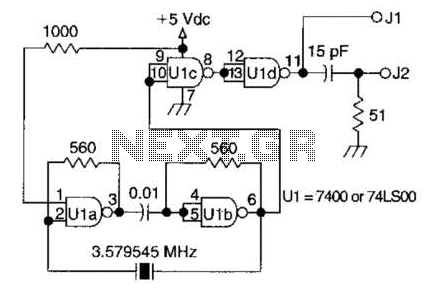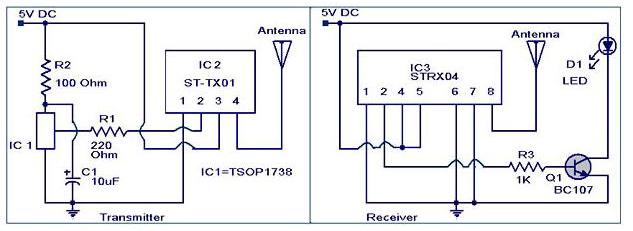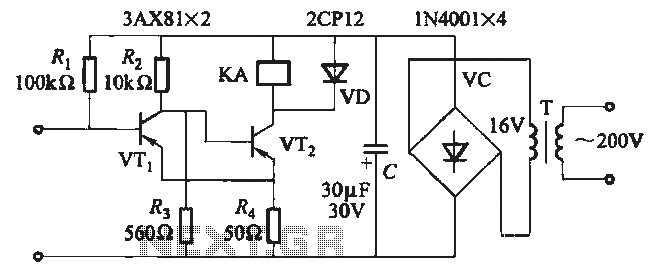
Battery consists Wll7 W217 W317 configuration application circuit

The W317 circuit integrates a three-terminal adjustable voltage regulator designed for battery charging applications. It features a constant pressure limiting charger circuit, where resistor Rs is employed to restrict the charge current, thereby reducing the initial charge rate. Additionally, another charging circuit is illustrated, where resistor R3 is utilized to limit the maximum charging current of the transistor.
The W317 adjustable voltage regulator circuit serves as a versatile solution for battery charging applications, enabling precise control over the voltage and current supplied to the battery. The circuit is designed to ensure safe charging conditions by incorporating various current-limiting components that help prevent damage to both the battery and the charging circuitry.
In the first configuration, the constant pressure limiting charger circuit utilizes resistor Rs to manage the initial charge rate. This is crucial in preventing excessive current from flowing into the battery when it is in a low state of charge, which could otherwise lead to overheating or damage. The value of Rs should be selected based on the specifications of the battery being charged, taking into account its capacity and recommended charge current.
The second configuration introduces an additional layer of protection through the use of resistor R3. This resistor is strategically placed to limit the maximum charging current that can pass through the transistor, thereby protecting it from potential overload conditions. By carefully calculating the resistance value of R3, the maximum allowable current can be set, ensuring that the transistor operates within its safe limits throughout the charging process.
Overall, the W317 adjustable voltage regulator circuit exemplifies a well-thought-out design that not only provides adjustable voltage output but also incorporates essential safety features to enhance the reliability and efficiency of battery charging operations. Proper implementation of these components will result in a robust charging solution suitable for a variety of battery types. As shown by W317 is being integrated three-terminal adjustable voltage regulator circuit consisting of a battery charging applications. FIG. (A) given constant pressure limitin g charger circuit, wherein Rs is used to limit the charge current, to reduce the initial charge rate; Figure (b) is given still another limiting charging circuit, and wherein the resistor R3 used to limit the maximum charging current of the transistor.
The W317 adjustable voltage regulator circuit serves as a versatile solution for battery charging applications, enabling precise control over the voltage and current supplied to the battery. The circuit is designed to ensure safe charging conditions by incorporating various current-limiting components that help prevent damage to both the battery and the charging circuitry.
In the first configuration, the constant pressure limiting charger circuit utilizes resistor Rs to manage the initial charge rate. This is crucial in preventing excessive current from flowing into the battery when it is in a low state of charge, which could otherwise lead to overheating or damage. The value of Rs should be selected based on the specifications of the battery being charged, taking into account its capacity and recommended charge current.
The second configuration introduces an additional layer of protection through the use of resistor R3. This resistor is strategically placed to limit the maximum charging current that can pass through the transistor, thereby protecting it from potential overload conditions. By carefully calculating the resistance value of R3, the maximum allowable current can be set, ensuring that the transistor operates within its safe limits throughout the charging process.
Overall, the W317 adjustable voltage regulator circuit exemplifies a well-thought-out design that not only provides adjustable voltage output but also incorporates essential safety features to enhance the reliability and efficiency of battery charging operations. Proper implementation of these components will result in a robust charging solution suitable for a variety of battery types. As shown by W317 is being integrated three-terminal adjustable voltage regulator circuit consisting of a battery charging applications. FIG. (A) given constant pressure limitin g charger circuit, wherein Rs is used to limit the charge current, to reduce the initial charge rate; Figure (b) is given still another limiting charging circuit, and wherein the resistor R3 used to limit the maximum charging current of the transistor.
